Cork yoga mats have been gaining popularity among yogis for their eco-friendly nature, excellent grip, and durability. If you’re considering investing in a cork yoga mat but have questions, you’ve come to the right place. In this article, we’ll address the most common queries surrounding cork yoga mats to help you make an informed decision.

1. What are cork yoga mats made of?
Cork yoga mats are primarily made from cork, a sustainable material harvested from the bark of cork oak trees. Cork is harvested from the bark of cork oak trees, primarily found in Mediterranean regions such as Portugal, Spain, and Italy. The process of cork harvesting is meticulously done by skilled workers, ensuring the trees remain unharmed.
When cork is harvested, only the outer bark layer is removed, leaving the tree intact. This process doesn’t require cutting down trees, making it a sustainable and eco-friendly practice. In fact, cork oak trees can be harvested multiple times throughout their lifespan, which can span over 200 years.
Not only does cork harvesting preserve the trees, but it also benefits the environment. Cork oak trees play a vital role in carbon sequestration, absorbing CO2 from the atmosphere and storing it within their bark. Additionally, harvested cork trees have been shown to absorb even more CO2 as they regenerate their bark, making cork a carbon-negative material.
Overall, the process of harvesting cork is not only sustainable but also contributes to the preservation of forests and the reduction of carbon emissions, making it an environmentally responsible choice for various products, including yoga mats.
Cork yoga mats often have a natural rubber or TPE (Thermoplastic Elastomer) backing for added durability, cushioning and grip. At Boho Flow, we consciously chose natural rubber as the backing for our cork mats, as it is completely plastic free, provides better durability than TPE, and ensures that your mat stay flat and securely in place, which is often not the case with TPE.
Grab your premium Boho Flow cork yoga mat here!
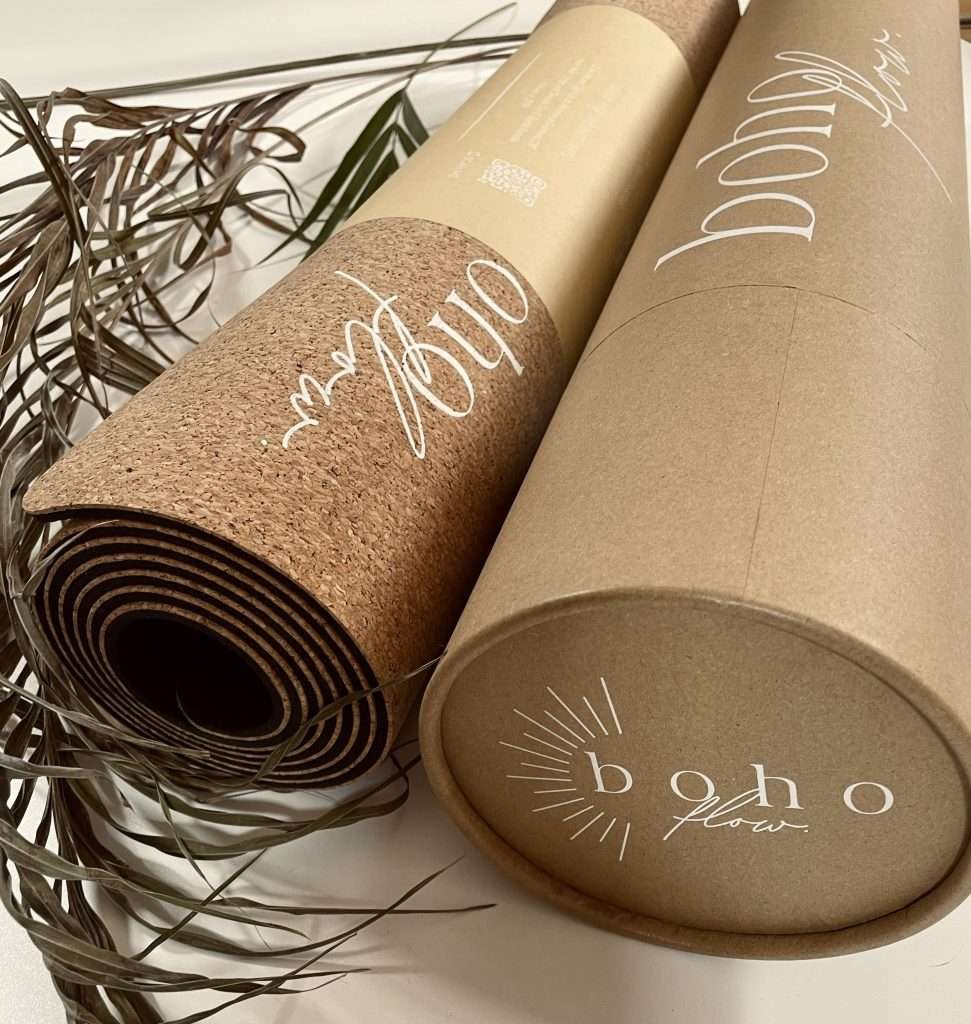
2. Are cork yoga mats eco-friendly?
Yes, cork yoga mats are highly eco-friendly. Cork is a renewable and biodegradable material, and its harvesting doesn’t harm the trees. Additionally, many cork yoga mats are manufactured using sustainable practices.
In addition to cork, the use of a natural tree rubber backing further enhances their eco-friendliness. Natural tree rubber is derived from the sap of rubber trees, also known as Hevea brasiliensis, primarily found in Southeast Asia.
The extraction process involves tapping into the tree’s bark to collect latex sap, a process that doesn’t harm the tree and allows it to continue growing and thriving. Similar to cork harvesting, the extraction of natural rubber is sustainable and renewable, as rubber trees can be tapped for latex over many years without causing damage.
Natural tree rubber is biodegradable and free from harmful chemicals, making it an environmentally friendly choice for yoga mats. When combined with cork, it creates a mat that not only provides excellent grip and cushioning but also aligns with eco-conscious values.
Due to their eco-friendly materials, most cork yoga mats can be disposed of responsibly at the end of their lifetime and can be recycled or decomposed.
3. How do cork yoga mats compare to traditional PVC mats?
Cork yoga mats offer several advantages over traditional PVC mats. They are more environmentally friendly, provide better grip, and are usually more durable.
PVC mats contain plasticizers and other synthetics, and may contain harmful chemicals. They are therefore also not very eco-friendly and usually less durable. Cheap, traditional PVC mats provide very little grip, especially when the grip becomes sweaty – you’ll be sliding all over the place. Usually, PVC mats also emit a chemical smell due to their manufacturing and may very likely be wrapped in plastic packaging.
Cork mats, on the other hand, emit only the natural cork scent and are non-toxic to the skin. Cork as a material is also hypo-allergenic, which means it makes a good choice for people with sensitivities. At Boho Flow, we also take great care to avoid any plastic in our products and packaging.
4. Are cork yoga mats non-slip?
Yes, cork yoga mats are known for their excellent grip, even during sweaty yoga sessions. The natural texture of cork provides traction, helping you maintain stability in various poses. Cork mats provide superior grip to PVC and even rubber mats, whether dry or wet. You do not have to “break in” your cork yoga mat – it will provide you with exceptional grip from day one.
5. Can cork yoga mats be used for hot yoga?
Absolutely! Cork yoga mats are suitable for hot yoga practices. Their natural properties make them resistant to moisture and sweat, ensuring a stable grip even in heated environments. The most amazing thing about cork yoga mats are their antimicrobial properties that keep your yoga mat clean and sanitary compared to other mats.
While cork yoga mats may absorb some sweat, they are less prone to absorbing moisture compared to other materials like foam. This quality helps maintain the mat’s grip and prevents bacterial growth. Check out our article that explains in depth the advantages of using cork mats for hot yoga!
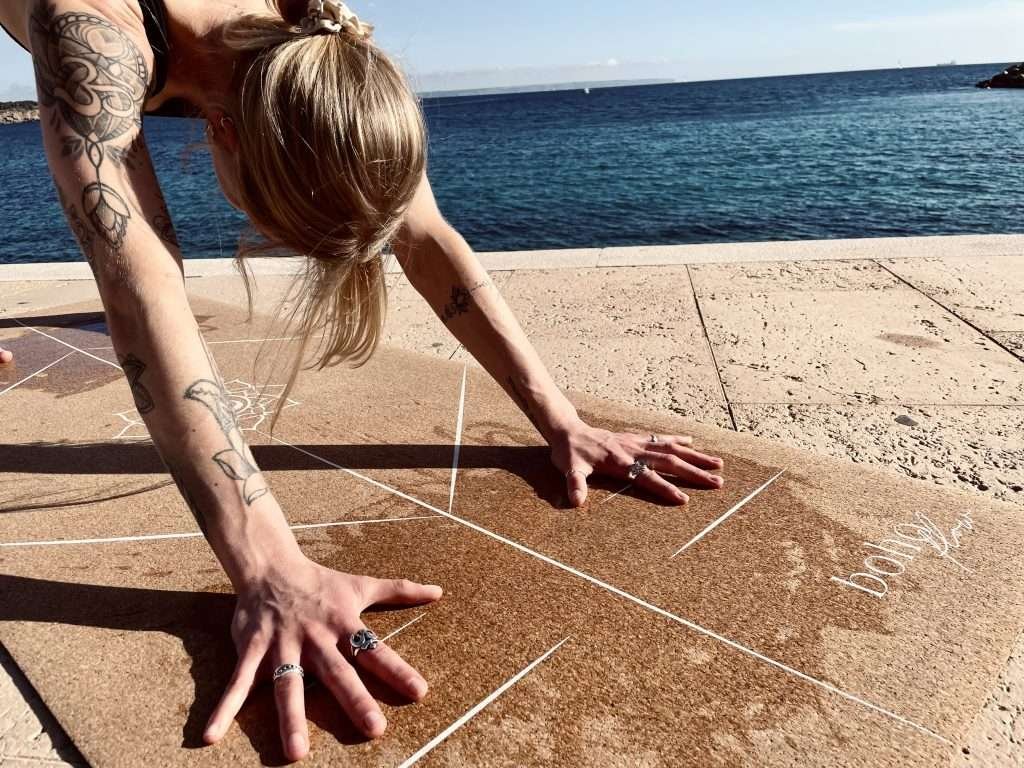
6. How do you clean a cork yoga mat?
Cleaning a cork yoga mat is simple. You can wipe it down with a damp cloth and mild soap after each use. For deeper cleaning, you can use a mixture of water and vinegar with a few drops of essential oils, which is easily made at home in a spray bottle for little money. You can also opt for a specialized yoga mat cleaner, but please be sure to avoid any harsh chemicals that may damage the cork surface.
Make sure to let your cork mat air dry after cleaning it and before you roll it up, but avoid leaving it out in the sun for long periods of time. Roll up your cork mat with the cork layer facing out.
7. Are cork yoga mats durable?
Yes, cork yoga mats are known for their durability, especially when they are backed with natural tree rubber. They can withstand regular use, even of dynamic and heated yoga practices, without deteriorating. Cork yoga mats are a great choice for a long-lasting investment for your yoga practice.
At Boho Flow, we specifically designed our cork mat with a natural rubber backing to provide grip on the floor, durability, and a weighty lay flat yoga mat. Grab yours here!
8. Are cork yoga mats heavy?
The weight of a cork yoga mat depends significantly on the material of the backing and the thickness of the mat. Cork yoga mats can be quite heavy compared to traditional PVC mats if they have a natural rubber backing.
If the cork is backed with TPE, it will be significantly lighter. TPE cork yoga mats usually come a little thicker and provide sufficient cushioning, too. However, you then face the problem of the mat bunching up, not staying flat and being less durable. Also bear in mind that TPE contain certain plastics.
If the cork mat is backed with natural rubber, it will be more weighty but offer superior traction on the ground and definitely stay securely in place without bunching up. The thicker the rubber backing, the heavier the mat.
Depending on your preference for cushioning, you can usually choose between travel mats (around 1.5mm), everyday mats (around 4-5mm) and extra thick mats (6+ mm). A cork yoga mat with a 6+ mm natural rubber backing will be fairly heavy, weighing at least 7 to 8 pounds.
Our Boho Flow cork yoga mat with natural rubber backing strikes a perfect balance of thickness and weight: At 5mm, the mat weighs about 6 lbs, which means it offers cushioning for joints but enough stability for balance poses.
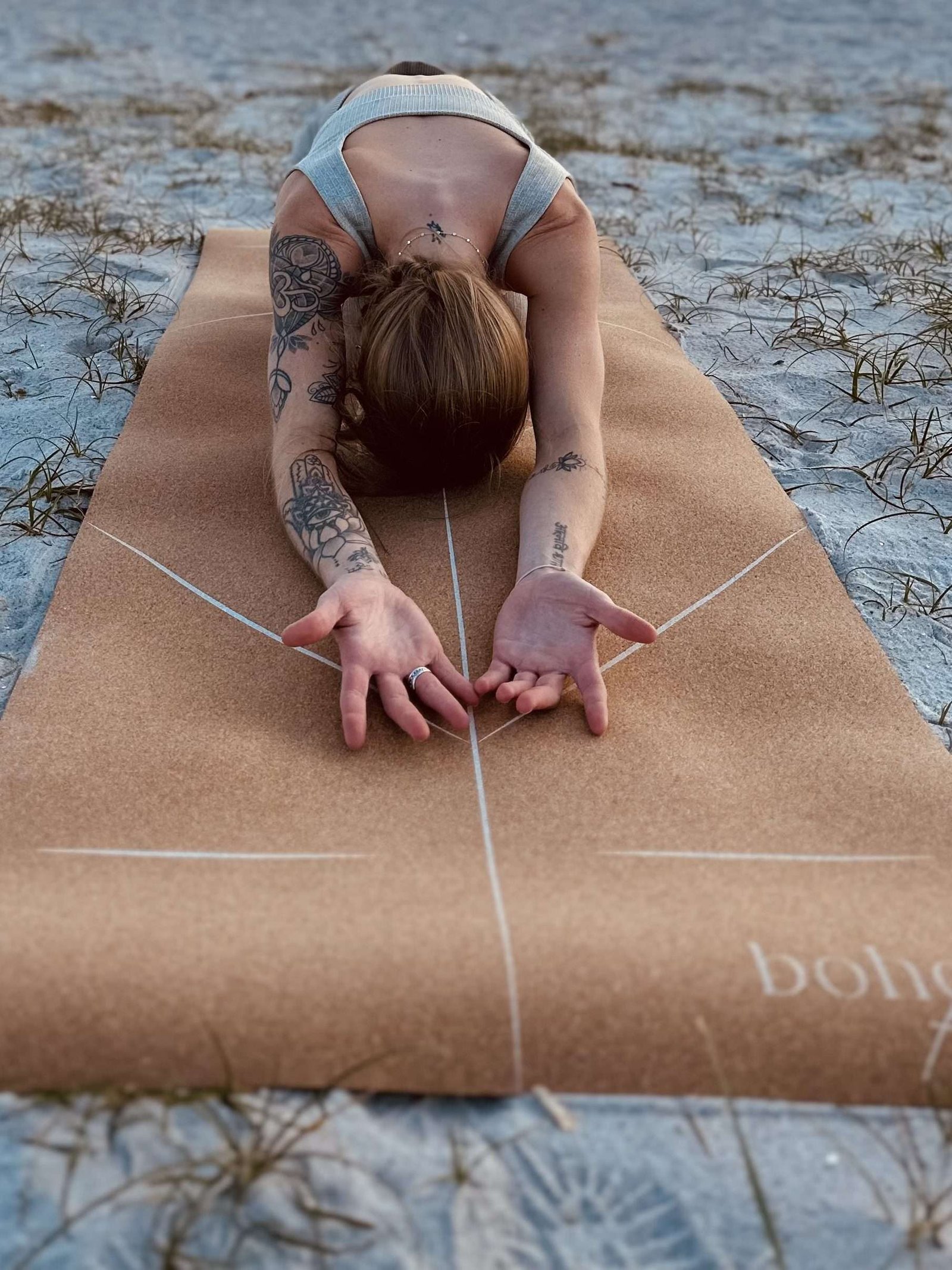
9. Do cork yoga mats have a strong odor?
Compared to PVC or rubber mats, cork mats have a lot less odor due to their natural materials.
Cork mats may at first have a faint natural scent but it usually dissipates over time.
Unlike synthetic mats, cork yoga mats do NOT exhibit any chemical odors though. What you might smell is most likely the natural cork scent.
If any of the odors bother you, you can try wiping down your mat with water and essential oils of your choosing, as mentioned above.
10. Are cork yoga mats expensive compared to other types of yoga mats?
While cork yoga mats may have a higher upfront cost compared to cheap PVC or foam mats, their longevity and eco-friendly benefits make them a worthwhile investment in the long run.
Most of the professional, durable and premium quality material yoga mats will be pricey, whether you are looking to get a natural rubber or a cork yoga mat. A decent quality mat will probably cost you anything from $60 or upwards.
Please do not be fooled if you find very cheap cork yoga mats out there. Manufacturers will skimp on the cork quality, which can negatively affect the grip and longevity of your mat. Usually, cork and TPE mats also tend to be cheaper, because TPE is cheaper in the sourcing and production than natural tree rubber.
If you want a high quality cork yoga mat that will last you for many years to come, you should be prepared to invest into your mat.
11. Do cork yoga mats have a break-in period?
Nope! Unlike rubber or synthetic mats that can feel slippery at first, cork provides grip from day one—and it actually improves with sweat!
12. Can I roll up my cork yoga mat like a regular mat?
Yes! Cork mats roll up easily. Just make sure to roll it with the cork side facing out to prevent curling edges when unrolled. We also recommend not rolling the mat too tightly to avoid any creases in the cork surface.
13. Are cork yoga mats good for sensitive skin?
Yes! 🌿 Cork is hypoallergenic and free from toxic chemicals, making it a great option for anyone with skin sensitivities or allergies.
Final Thoughts
We believe that cork yoga mats offer a number of significant benefits over traditional PVC, TPE or even natural rubber mats. Cork yoga mats offer a sustainable, non-slip, durable and non-toxic surface for your yoga practice, making them a popular choice among yogis worldwide. Depending on your needs, make sure to check whether your cork mat is backed with TPE or natural tree rubber to address the points mentioned above. Be prepared to invest into a cork mat that will be your yoga partner for many years to come!

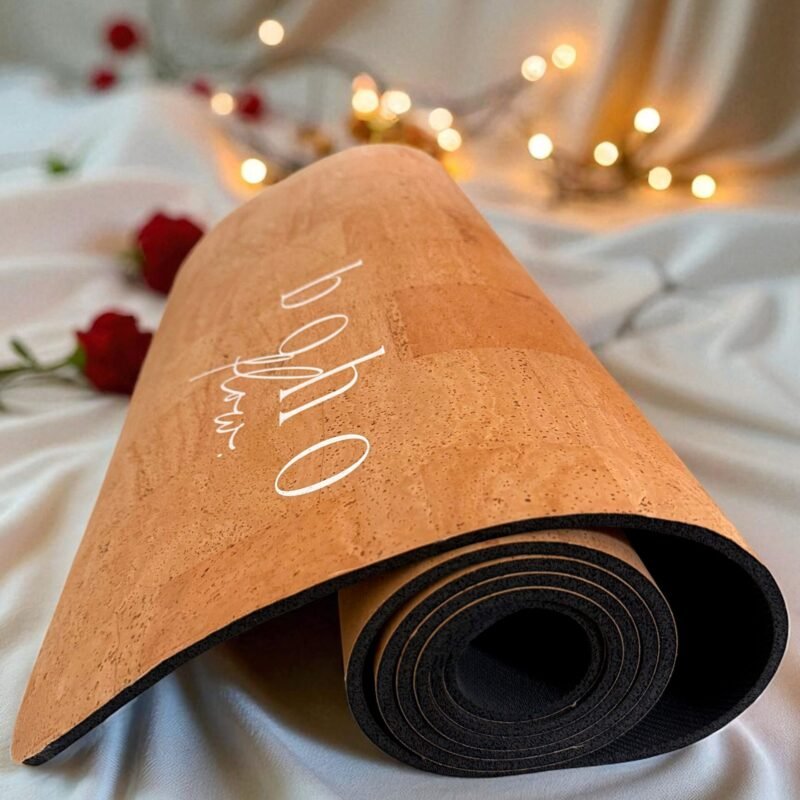
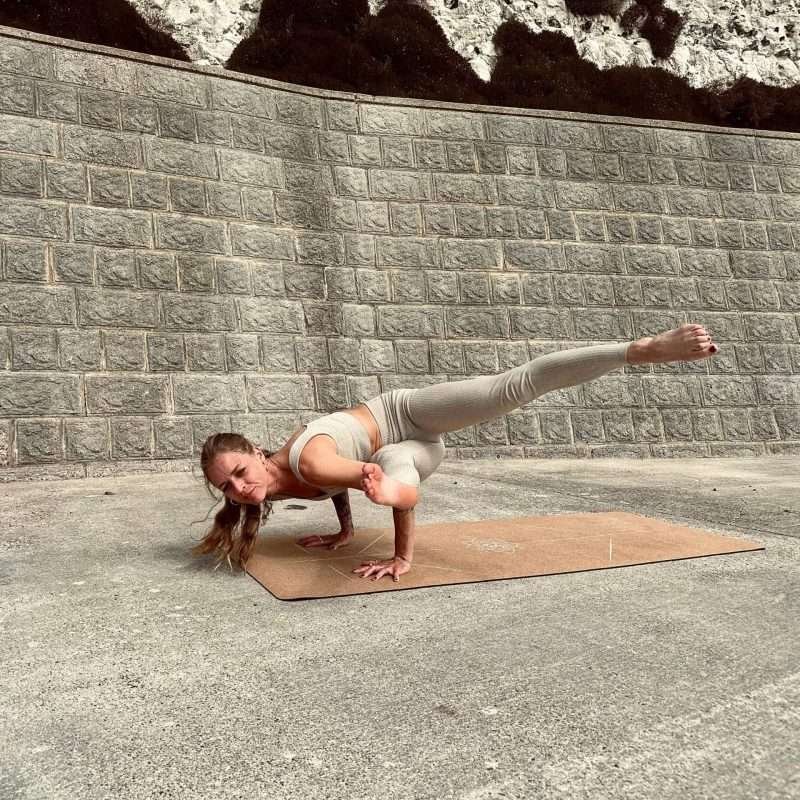

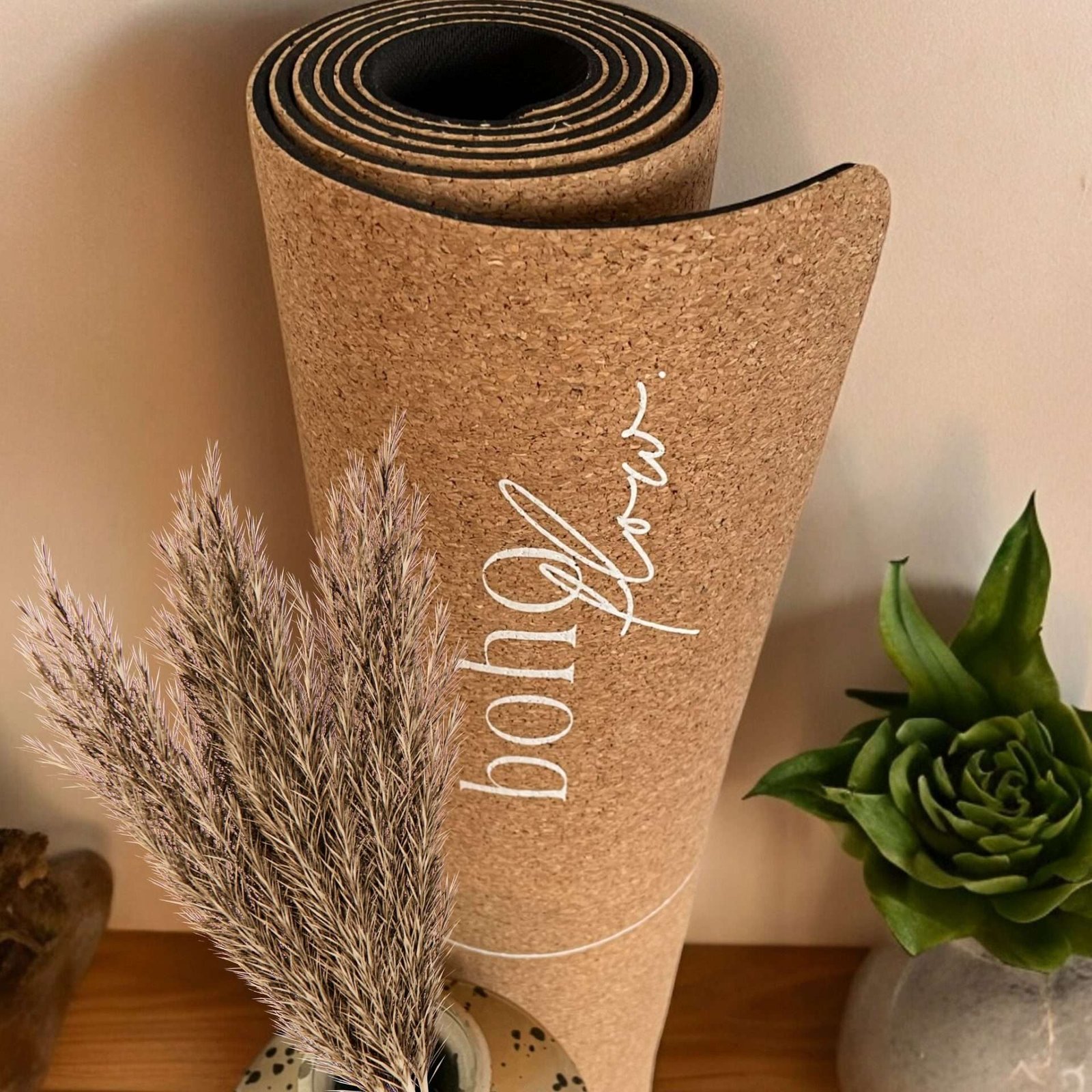

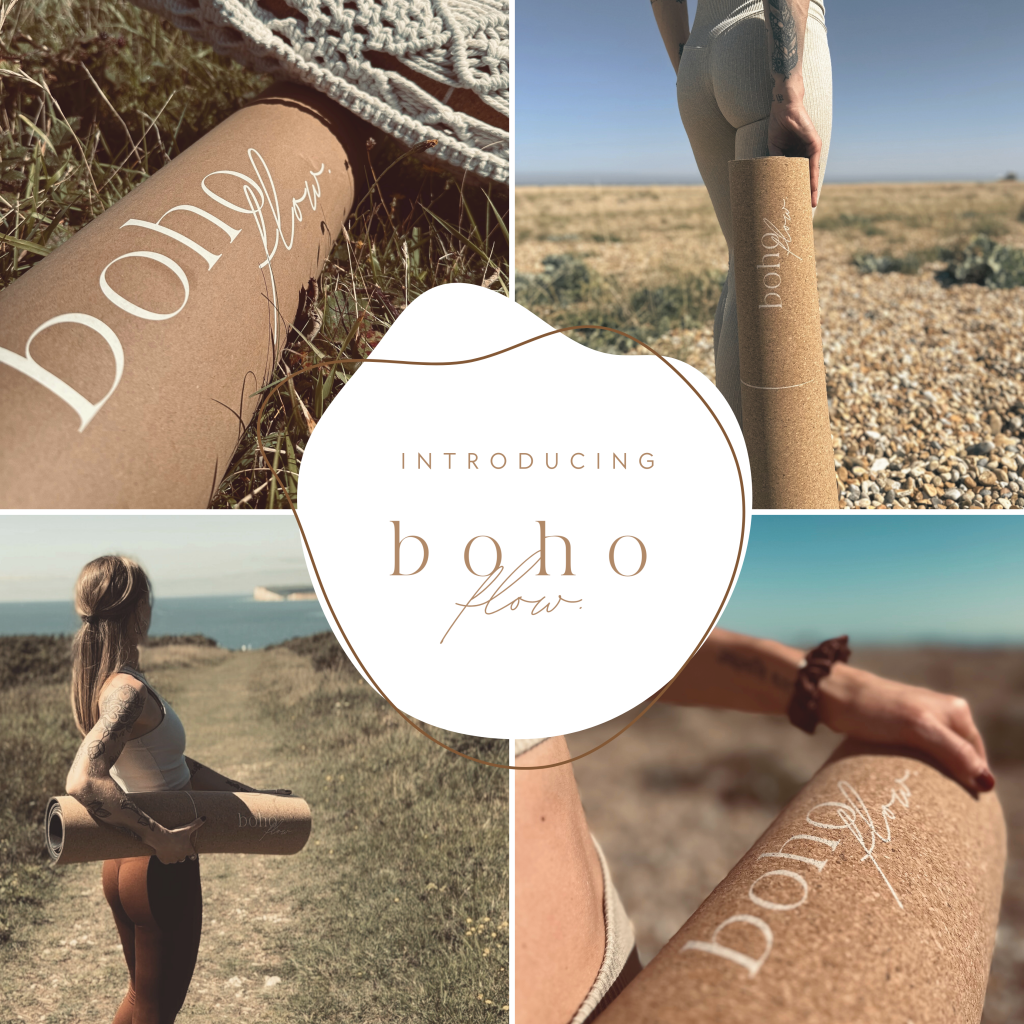
4 thoughts on “Top FAQs about Cork Yoga Mats: All Your Questions Answered”